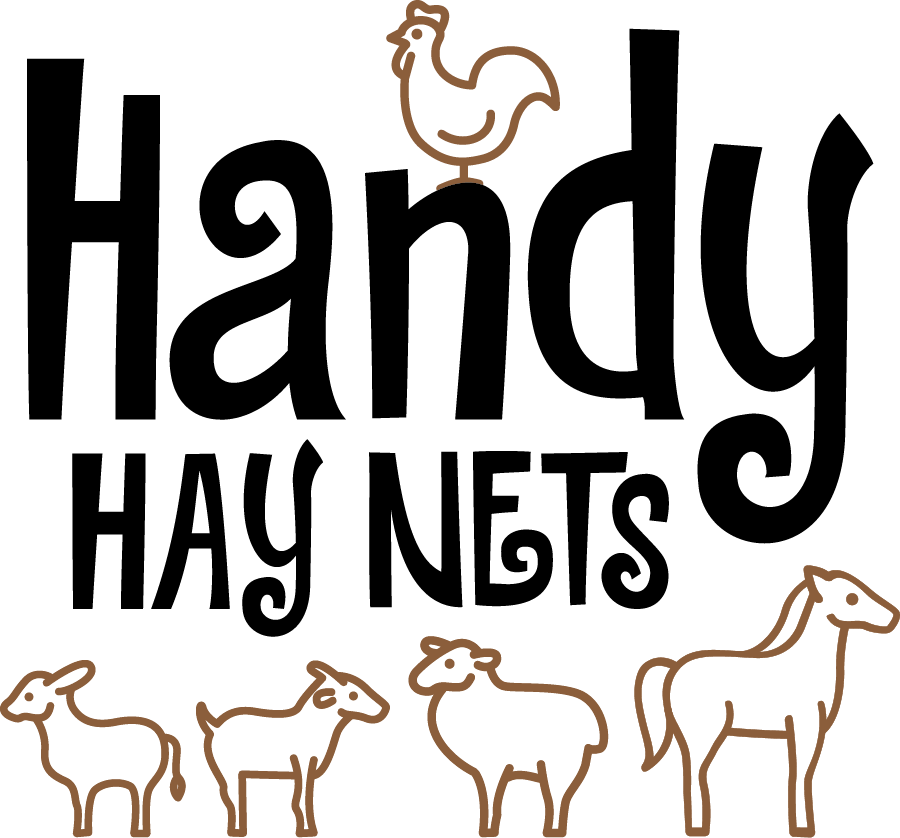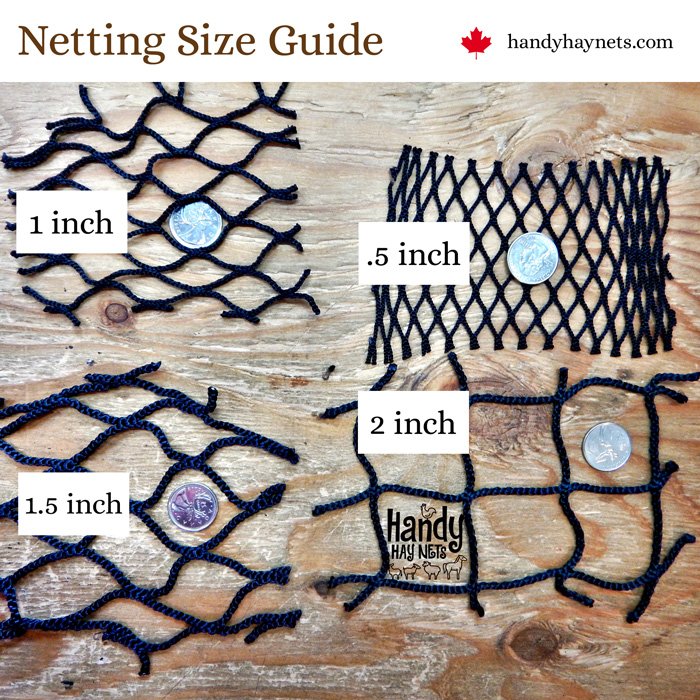How to adjust your slow feeding set up during winter.
As winter creeps toward us and the days get shorter I thought it was a good time to talk about adjusting your hay feeder set up to help your horses be healthy and happy and reduce their stress.
I spend a lot of time on the phone with wonderful customers, supporting you to observe your horse's behaviour with their hay nets and translating that into practical solutions to reduce stress in your horses' environment and minimize your work managing them.
So how do you know when you should change the number of bags and/or size of netting?
As a general rule, in ANY situation where your horse might be more stressed such as: trailering, shows, sickness, old age, cold weather, very wet weather, stall confinement, new environment or new herd members etc., I recommend a netting hole size of 1.5” be available with or without a 1" holes bag as well if they are transitioned to one. This can still be by the portion (the amount you normally feed) unless you choose free-choice feeding principles. Please don’t introduce a smaller netting hole size during these times. If you do you will be adding stress and you may see your bags get damaged.
WINTER
I always recommend a minimum of one extra bag than the number of horses. For my two horses Kolya and Sage, use two large full 1" hole bags inside the shelters because the horses use them a lot when it's hot or the bugs are bad in the summer, and when it’s windy, raining, snowing or slushy in the fall/winter. I also put out two 1.5" hole medium bags tied low to the ground to two trees as well as two or three 1" hole trailer bags with only a few flakes in each down toward the end of the track system. I’ll often put their nightly alfalfa portion in these as it encourages movement in winter and they enjoy shaking out the tasty leaves. Most days I only have 2 to 3 bags to refill. It makes things much easier in the winter when there's lots of snow ploughing to be done on top of my regular chores!
Here’s what I recently suggested to a customer when coaching her on her winter slow feeding set-up…
I told her to put the bulk of the hay in a 1” hole bale bag. Also, put out a 1.5” hole medium bag. Very slowly decrease the amount of hay in the 1.5” bag and don’t fill this bag more than once a day so they start to decrease their dependence on it. How long does it take until you can remove the 1.5” bag? That really depends on the horses involved and please make sure you have enough bags so that herd dynamics are not a factor (e.g. the lead horse standing at the 1.5” medium bag and keeping the rest away). And a side note here… don’t be afraid to add the 1.5” hole bag back in during cold winter weather!
The point is to watch your horses and be as flexible as possible during winter months, letting THEM dictate and tell you what they need. For example - your horses know when a storm front is coming and may mysteriously eat a bit more a day or two before it arrives. Maybe they need more nutrition because they are still thickening their winter coats? All of this is ok with me as my horses don’t have weight issues and I trust them to take what they need. As a result, they are relaxed in their home environment.
Damaged Bags
If you are seeing a lot of holes in your bags it is a SURE sign that your horses are having a difficult time. Either the texture/length/type of hay is not appropriate for the netting size, and the horse is trying to help with that by making LARGER holes OR your horse isn’t getting enough food for their nutritional/caloric needs. Excessive pawing along with a tight body/eye while eating from the bag is also a clue to watch for. I have a great blog post with lots of pictures to demonstrate types of hay and netting hole sizes here.
Weight Management
While it is perfectly normal and expected for horses to put on a little weight going into winter, any horse with a history of metabolic issues, large fat pads and hard cresty neck etc., probably needs to be transitioned to 1” hole Handy Hay Net.
It’s important again, to let the horse guide this process a bit to reduce any stress that might come with the change. If you do need to repair your bags we include a bit of repair twine with each bag, or you can buy a spool here to keep on hand or we now have a full repair kit (including netting!) here.
It’s ok to be creative, and it’s ok to make mistakes.
I’ve found that having my horses at home with me has given me a LOT of insight into how changeable their needs truly are. After all, if they were wild in nature they’d be able to caretake their own needs and this is what I am trying to emulate as much as I can. Nature is creative!
We can cause our animals undue stress by being too rigid with our feeding regimens.
Until next time...
~Ali




